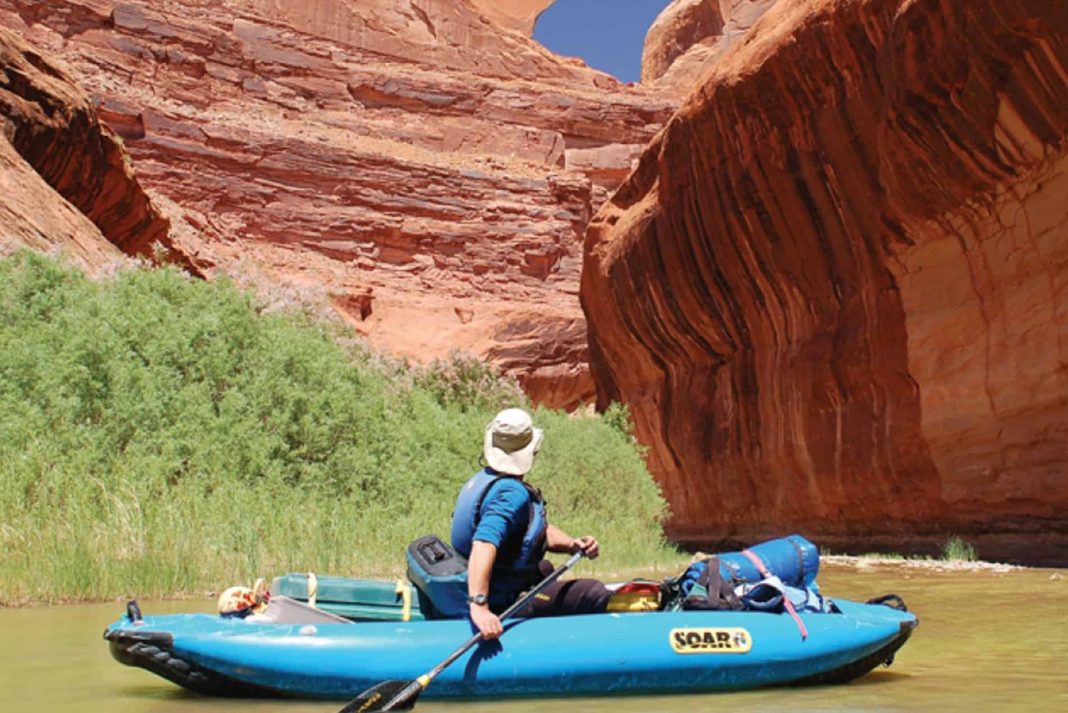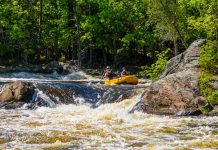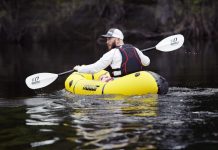The first time I took on Oregon’s wild and scenic Rogue River, I was in a solo hardshell open canoe, as were my boating buds. Self-supported, with camping gear and food for our three-day trip, we used every trick in the book to avoid capsizing as we negotiated 35 miles of remote, challenging whitewater. We weren’t always successful, but we did fine-tune our skills chasing down runaway boats. Tackling rapids can test even the most experienced wilderness tripper.
Ten years later, I returned to the same section of the Rogue with the same crew. Only this time, there were no swims and we were even able to run one difficult rapid that we portaged before. What gives?
We were all paddling inflatable canoes. Self-bailing, and with more stability than their hardshell counterparts, our burly, blowup boats bounced through the frothing rapids of the Rogue, emerging triumphantly into the emerald pools below every time.
I wasn’t always a cheerleader for inflatables. When I was first invited to use one—on a weeklong, self-supported, 100-mile whitewater trip, no less—I was suspicious of their durability, usability and lack of sex appeal. Would it be sluggish on the flat stretches between rapids? Would it hold up to the beatings a hardshell can take on a wild river? Would my buddies think I was a wimp for choosing an inflatable over my trusty Bell Nexus tripper? Could I really trust my life in the wilderness to some kid’s ducky?
How an open boat and open mind can change a stubborn man. That 100-mile trip made me a true believer. My fully loaded, 14-foot inflatable felt and responded like a hardshell canoe. And because of its stability and self-bailing attributes, I was able to run boat-swamping rapids with aplomb while my hardshell brethren scrambled to make it through the gauntlets unscathed.
The inflatable canoe has evolved into a technological marvel over the past 15 years. Built of rugged materials and designed by paddlers for paddlers, these are serious boats for serious boaters. The fun factor definitely diminishes when paddling an inflatable on flatwater rivers and lakes, but speed isn’t everything when river tripping, which is the inflatable canoe’s true domain.
I’ve grown to rely upon these versatile craft. Their large cargo capacity is perfect for multi-day river safaris and I’ve taken them across the continent, everywhere from Texas’ Lower Canyons to the Nahanni in the Northwest Territories. My friends used to laugh at me, but I’ve since made converts out of them, too.
More than anything, my inflatables have proven their worth on remote and exotic rivers—the steamy jungle of Nicaragua, mountains of Bolivia and in the wild steppes of Mongolia. You try getting a hardshell there by mule, backpack or public bus. These rivers are only an option if your boat packs smaller than a golf bag.
Whether it’s short sojourns near home or hardcore getaways, don’t be surprised if, after putting it to the test, you, too, advocate for these practical and efficient blowup boats.
Larry Rice resides in Buena Vista, Colorado. Among his fleet of canoes are four inflatables, from 10 to 16 feet in length, stored neatly in bags under the pool table in his basement.










Nice to see a SOAR inflatable canoe featured in a photo about inflatables. I guess SOAR is not in the buyer’s guide because we didn’t pay to be in it.